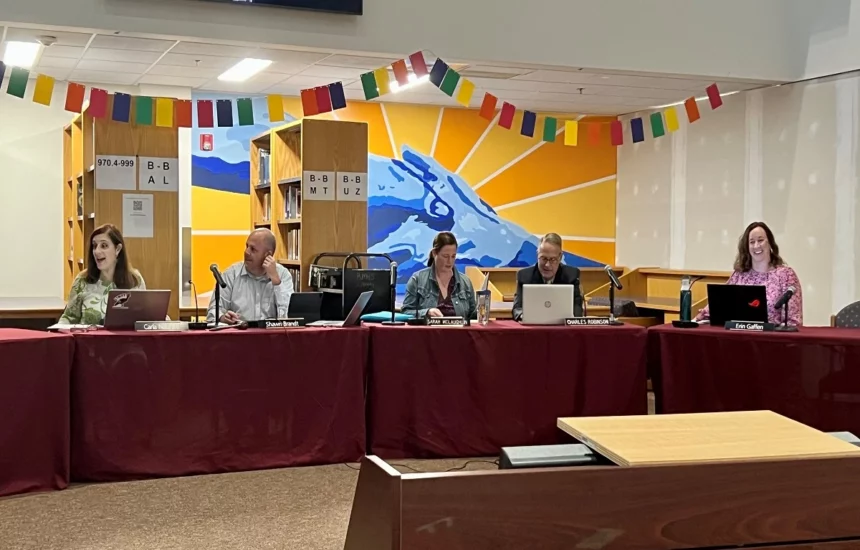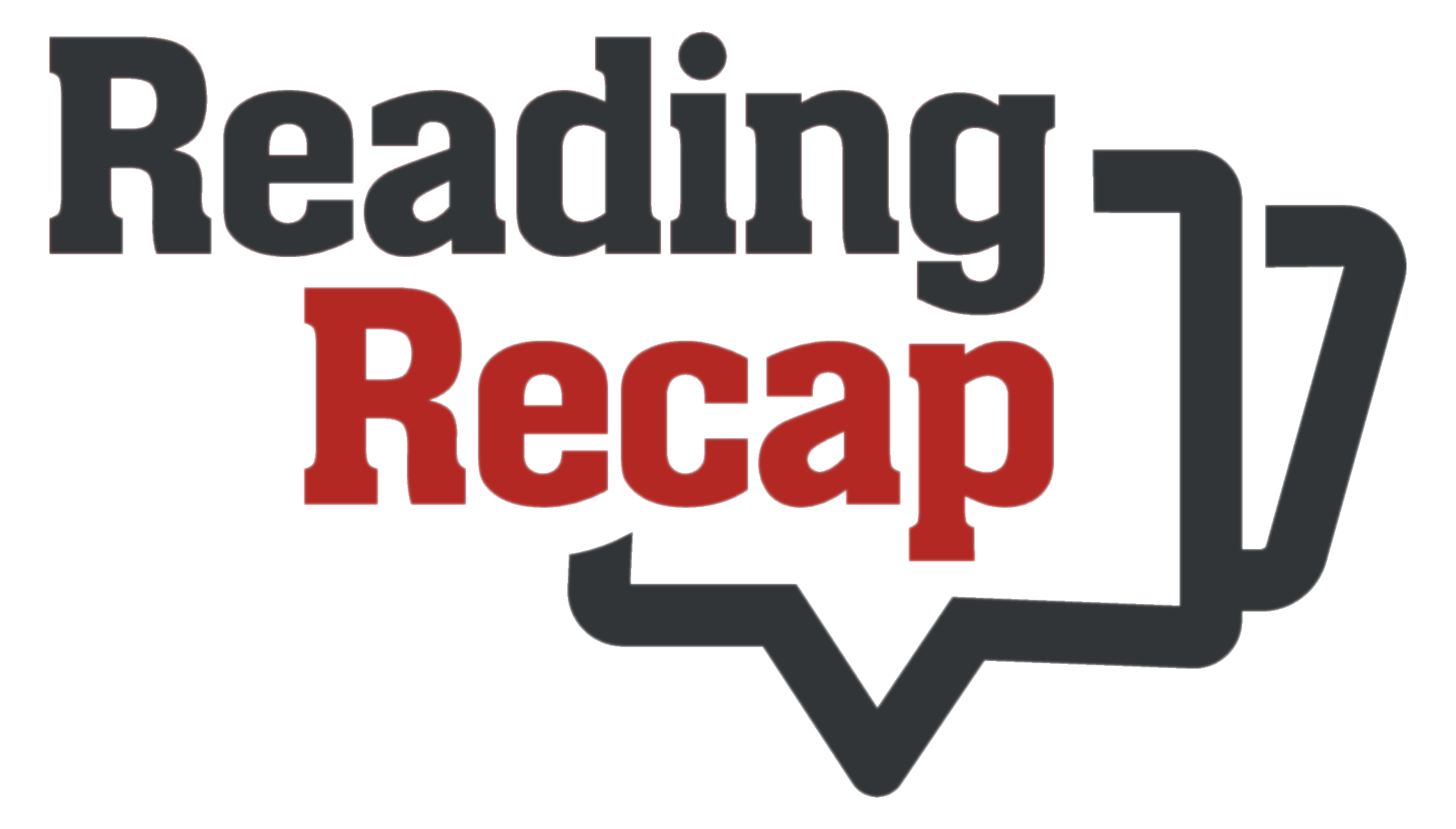(Please note that you can play the audio version of this article by clicking the play button above as well as increase the speed of the playback)
VOTE ON KILLAM WARRANT ARTICLE, DISTRICT STRATEGIC PLAN, and DISTRICT HANDBOOK
The Reading School Committee (SC) met on 9/15/2022 and voted to approve the Killam warrant article, a modified version of the “Introduction” to the Killam warrant article, the district strategic plan and the district handbook. They also heard a proposal by the director of the Extended Day program, to streamline the job and salary classifications and increase salaries, which had not been updated since 2012 to hourly levels that are more in line with those of several peer communities.
Public Comment
Two speakers during the public comment portion of the meeting started this meeting on a positive and uplifting note.
First, Reading Public Schools (RPS) parent Maria Morgan, who has a child at Wood End with a rare condition called Williams Syndrome, had praise for the many ways that Wood End staff, have gone above and beyond their job duties, to help bring attention to this condition and other student conditions. For example, Ms. Morgan noted that Wood End staff members “took it upon themselves to find information about fundraisers and walks associated with their students without us ever even knowing. They formed teams, registered and they plan on bringing a group to Franklin Park Zoo on a Sunday morning of all things September 25th at 8 A.M and they’re doing similar for Down syndrome in October.”
Ms. Morgan also added that, “again this week I opened the wood end newsletter and saw that the school had planned a pride day for Williams Syndrome on September 23rd and they’ve encouraged all Wood End Wildcats to wear blue that day in celebration of Williams Syndrome. Again this was done without our even knowing. They’re not celebrating because we asked but because they themselves want to celebrate. It means so much to us that these efforts are coming directly from the school and not just from us. “
The actions that I described show that embracing all students and celebrating differences are Wood End School values. Having it come from the school staff lets us know that an appreciation for all students of all abilities is part of Wood End school culture….I cannot adequately express how much that means to us…”
Maria Morgan
Next, Select Board member and RPS parent Chris Haley gave a follow up on the fundraising from the dunk tank at the town fair on September 11, 2022, which featured multiple RPS staff members and SC members who participated. Mr. Haley began by saying, “I’m not sure how I’m supposed to follow up on that but I guess I can just build upon um the same kind of spirit and atmosphere that’s been demonstrated here time and time again.” He then thanked the multiple members of the RPS and SC communities, including Tom Wise, Carla Nazzaro, Erin Gaffen, Dr. Milaschewski, Sherilla Lestrade, Jason Peledge, Kevin Tracey, Kadi Buckley, Rochelle Rubino and Jessica Callanan, who helped the dunk tank raise $1704 dollars [author note- after hearing Mr. Haley’s comment at this meeting, another donor stepped up to that amount raised to bring the total to $2001 dollars, beating last year’s total] to be split between the Reading Rotary and a long-standing local business having hard times, Ruff n Ready.
The highlight of the day for me though was Jessica Callahan, the Director of Academic Achievement here at Reading Memorial High School. She threw an absolute rocket at Dr. Milaschewski with her first ball and dunked him like she’s been practicing all her life for that moment.”
Christopher Haley
Staff Reports – Surplus Books, Challenge Day, First SEPAC Meeting, Notes From our State Legislators on Lower MSBA Reimbursement
During the staff reports, finance Director gave a clarification about the 1020 “student companion” math books listed as “surplus” in the packet (as noted in the Reading Recap School Committee preview article for the 9/15/2022 meeting). Ms. Bottan explained that, “These workbooks came to us free of charge with a purchase of software digital licenses and textbooks. The math department had used some of these student workbook Companions, and the department head Allison Williams found that the workbooks didn’t bring a great deal of value to students’ learning, and so the workbooks are not used. We’ve contacted the vendor. The vendor will receive the workbooks back; however, we will not be able to receive a credit for future purchases, but I did want to explain the reason why those 2018 student companion books were listed.”
Dr. Milaschewski gave some clarification about planned use for the $12,000 donation from the Pegasus Springs Foundation (a foundation run by former RPS Assistant Superintendent Craig Martin and his wife). Dr. Milaschewski stated that the donation will pilot a challenge day at Coolidge, but Dr. Milaschewski noted that he wanted “to just give a little bit of context to the community on why are we calling it a pilot when this has been done before and also why one middle school and not the other” are doing the pilot. He clarified that, although, “We have a lot of students, staff, and families who are extremely supportive of the program and have had really positive experiences…we also have members of our community and members of our staff who think that we could do more to provide more support in the program that would enhance the experience for our students… we’re talking about supporting students mental health during a pandemic context.”
He said that Assistant Superintendent Dr. Jen Stys led a committee that was made up of all of the district’s secondary licensed mental health clinicians, including a lot of the RPS school counselors our school psychologists, to think about the future of challenge day and the future of RPS socio-emotional learning (SEL). As a result of this work, they felt it was important for the RPS mental health clinicians to have a shared understanding of what challenge day is by experiencing it, though many have not yet done so. The group also felt that it was important that when schools have students speaking about issues that are really deeply personal and deeply challenging, that RPS provide all the right supports for students in those settings. Thus, they decided all RPS licensed mental health clinicians will be at Coolidge during the Challenge day pilot, to support students through the programming.
Dr. Milaschewki finished by noting that, after the RPS mental clinicians go through the program with the Coolidge students, the clinicians will have learned further information to help determine if the Challenge Day model is right for RPS and is in the best interest of students. Following the pilot at Coolidge, he added, they will reassess, and possibly move forward at Parker [with the same program] later this spring or next year.
Dr. Stys, in her report, noted that the first SEPAC (Special Education Parent Advisory Committee) meeting of the year will be a virtual meeting on Tuesday September 20, 2022 at 7:00 pm. She said that this first meeting will cover terminology used in education, especially general education, such as tiered level of supports, SST (student support teams), etc. . She indicated a link to the meeting will be sent out but is also in the front page of the district website, and that going forward SEPAC meetings will be on the third Tuesday of the month, and they’re hoping to have a virtual and in-person option for those meetings.
Dr. Stys also added that coming up in October, on October 18, from 5:30-7 at the Reading Public library, there will be a new resident open house, and if families speak another language other than English they are willing to get interpreters, because they’d really like to make connections for everybody to be part of our reading community.
Dr. Hardy, the Assistant Superintendent of Teaching and Learning, briefly described the new curriculum programs, which she characterized as, “high quality research-based programs that we believe offer to our students’ equitable access to grade level standards and rigorous tasks.” These include ARC CORE for literacy being rolled out in gr. 3-5 and Illustrative math for grades K-2 (Illustrative Math had already been rolled out gr. 3-6 during the 2021-2022 school year).
SC member Erin Gaffen and SC Chair Brandt provided some additional firsthand experience that their respective fourth graders are having with the ARC CORE curriculum. Ms. Gaffen stated that she had recently attended the Joshua Eaton back to school night and that “it was really exciting to hear what they’re going to be doing in math and reading and writing this year and to just know all that went on behind the scenes to get to get to that point so it was it was an exciting moment”.
SC chair Brandt shared his experiences from his back to school night as well: “My daughter’s teacher was very thrilled, very pleased with early Returns on ARC CORE which I thought everybody would be interested to hear, and she particularly was raving about the quality of the coaching and which was something I know was important to all of us as we sort of evaluated implementing that program….I wanted to share one example that I found really compelling and my daughter’s been talking about non-stop. There were two texts that they were using one was a fiction a fiction book about a boy who was afraid of everything and then the other one was a non-fiction text that sort of explained sort of the scientific background of why we’re afraid of certain things and so they were sort of reading them in parallel and you know using them to make those connection it was a great example of that rigorous instructional practice that we were all that we’ve all been talking about…”
In additional updates, Staff members also shared that the food director has improved the point of Sale (POS) system and will be piloting a new plant-based meat substitute next month for student review and possible rollout in November. RPD Officer Scouten and town engineer Ryan Percival have developed new signage and procedures to improve the safety and routing of the drop-off for the RISE preschool. The RMHS track is scheduled to be ready for the opening RMHS football game on Friday September 23, 2022.
SC members also discussed possibly having two RMHS student representatives to the school committee, and that the Select Board had approved several American Rescue Plan Act (ARPA) allocations that impact RPS students, including $1.5 million for the Recreation departments Birch Meadow phase 1 plan, and $96.1K to the Recreation Department, to oversee the Burbank Y implementing adaptive sports programs, including adaptive swimming.
SC Chair Brandt gave a report on some things our state legislative delegation told the Select Board (SB) at their 9/13/20222, and it was, as he put it, “not the greatest news” regarding Massachusetts School Building Authority (MSBA) funding.
Chair Brandt explained that Senator Lewis mentioned that some of districts that are getting MSBA funding are not actually being allocated the full eligibility that the formula would suggest. Brandt noted that Lewis gave the example that Stoneham High School is eligible for a reimbursement percent similar to Reading, in the 40’s (40-45% of total project cost); however, for Stoneham, their actual reimbursement rate is going to be something like more like in the 20s. Chair Brandt clarified, “Don’t lean too much on that one number because there are things that popped up on their project that weren’t part of the original funding agreement [so] they don’t get funded… we know all there’s a lot of nuance there but in part just because the projects have gotten so much more expensive and MSBA is working with a fixed pool of dollars and they’re working on projects that they admitted… before we were in our current inflationary State. They [MSBA} are struggling a little bit to…properly fund those.”
Chair Brandt further noted Senator Lewis shared that the legislature is looking at how to buffer what MSBA has so that they can they can address that inflation. For example, Lewis mentioned the “Fair Share Amendment,” which is on the ballot in November, and that the state of the Commonwealth finances is such that they are hopeful that they’ll be able to find ways to properly fund the MSBA funding pool.
Not the end of the world yet but just wanted to give everybody that heads up that…our legislators are giving us that heads up that there is …some risk to the overall expectation we should have around MSBA reimbursement
Shawn BrandtLater in this meeting, it appeared that that this news on MSBA reimbursement potentially impacted the rational for some changes to the “introduction” to the town warrant (discussed later in the SC meeting and discussed further below).
Extended Day Presentation
Extended Day director gave a presentation on the salary levels and job classifications of the Extended Day program, including a proposal to increase the salaries to levels comparable to peer communities.
Mr. Nelson opened with some background and statistics on the Reading extended day program. Extended day was established in 2010, and in that first year it had 150 estimated students in all five elementary schools (number they projected based on the known enrollment that year of 30 extended day students at Joshua Eaton). This current year, the Extended Day program has 466 students, with 101 students on a waiting list, and there are short fourteen staff member. Nelson added that the biggest year was 2019 (a pre-pandemic year), when they had 535 students
In discussing the pay scales, Mr. Nelson noted that they were established in 2012 and have not been updated since then. Mr. Nelson shared a chart of the current compensation schedule for Extended Day. This chart showed, as an example, a current salary of the job “AM and PM assistant teacher” that ranges from $12.24/hour (for grade 1, a starting level) up $14.58/hour (for grade 8, the highest possible pay for an assistant teacher). [author note – it appears that the use of “grade” in the 2012 Extended day compensation schedule was more analogous to “steps” than actual academic grades, as it does not appear that there has ever been Extended day beyond academic grade 5].
There are additional teacher roles that pay more than the “AM and PM Assistant teacher” role. For example, for grade 1 level, the starting salaries are as follows: for a PM “head teacher” is $21.42/hour, a “PM teacher” for this grade makes $15.30/hour, and an “AM Head teacher” makes $19.38/hour. A “Site Coordinator” for gr. 1 makes $21.82/hour.
As an aside, for those unfamiliar with municipal pay, Massachusetts state law does not require that municipalities pay state minimum wage—only federal minimum wage. Thus, the pay scale is allowed to have every existing AM and PM assistant teacher position paying less than the current state minimum wage of $14.25 per hour, because those pay rates are allowable because higher than the current federal minimum wage of $7.25 per hour.
Mr. Nelson observed that they are competing with places like McDonald’s and Target, which pay higher than many of the hourly rates extended day pays. Proposed consolidating the roles and raising the hourly rates to be more competitive vs neighboring communities, with a pay scale that falls in the middle of the comparable communities. He noted that the various teacher roles should be combined, since “The new scale recognizes they’re all doing the same job and the titles just watered it down…so we decided to eliminate the titles… the duties [and] responsibilities that you’re currently doing: you’re engaging with the children you’re organizing and implementing games and activities with the children daily.” Mr. Nelson’s new proposed compensation schedule is as follows, with additional salary added to this based on if an employee has CPR or First aid (extra $0.44 per hour) or both CPR and First Aid (extra $0.96 per hour):
| Step | Site Coordinators hourly rate | Extended Day Teacher hourly rate |
| 1 | 26.54 | 22.18 |
| 2 | 27.21 | 22.74 |
| 3 | 27.59 | 23.31 |
| 4 | 58.59 | 23.90 |
| 5 | 29.31 | 24.50 |
Mr. Nelson shared another chart with the School Committee that showed that these new compensation rates are in the middle of the pay ranges of some peer towns that run similar programs and for whom we compete for staff, such as Malden, Stoneham, Tewksbury, Winchester, and Wakefield.
In response to questions by the School Committee, the Extended Day director and Finance director explained stated that the salary increase is expected to be covered by the full day K revolving account, which is funded by Extended Day tuition. Finance Director Susan Bottan stated, in response to an SC member question, that the revolving account ought to be able to fund these increases if Extended Day is able to have full enrollment and full employment (e.g., taking students off the waiting list, as well as hiring the 14 employees needed to cover these additional students).
Killam Warrant Article and Warrant Introduction Discussion
[Note that this part of this post has a lot of direct quotes from SC members, taken directly from the YouTube auto captioning of this meeting. The author felt it was important to include comments in as much of their entirety as possible to help the public understand the depth of debate on this topic within the SC].
The SC then took up the discussion and formal votes related to the warrant article for requesting $2.2 million for the feasibility study on Killam. The SC quickly approved the text of the warrant article by a 5-0 vote, but SC engaged in considerable debate and discussion regarding the language of the accompanying “Introduction” to the warrant article.
Chair Brandt proposed this addition to the “introduction” to the warrant article introduction as originally shown in the packet, based on his own reflection and also on community feedback [author disclaimer: this author suggested, via email, certain modifications to the introduction, and the chair acknowledged that his suggested changes, as shown to the SC, were adapted from my emailed suggestion, when he stated that “the recommendation from Ms. Downing from the FINCOM was to acknowledge in in the introduction at a minimum that while the Warrant article is focused on Killam and the MSBA discussion is focused on the Kilim site, that the feasibility study could also allow us to alleviate challenges more broadly across the district both from a space and a programmatic perspective”].
The initial suggested addition the Chair proposed stated:
“The feasibility study could also present solutions for other programmatic and space-related deficiencies in the district, including but not limited to: relieving capacity constraints at other elementary schools; eliminating the need for modular; creating a single site to house the RISE program; allowing for possible future expansion of RISE as new mandates explore the eligibility for access to RISE services. While the primary impetus for the project is focused on the deficiencies of the Killam building in servicing its current student population, these needs may also be contemplated/addressed during the feasibility study”
SC member Gaffen indicated her disagreement with this proposed modification, saying, “I’m not sure how I feel about the last sentence ‘while the primary impetus….’. I see the primary impetus is as resolving both of these issues…I think the space needs is a major reason why we’re doing this not just that the building has deficiencies. We can’t just build a new Killam, we have to address the fact that we have modular classrooms, that we have a preschool spread out all over town…we can’t do a project that doesn’t acknowledge those so… I would word that differently, because I don’t think this is… secondary, I think it’s this and this that we are trying to address with this project”.
Chair Brandt responded, noting, “Would we be in the MSBA process if we only had the Killam deficiencies to talk about – you know all the things we’ve all talked about? I think the answer is yes. Would we be in the MSBA process if we were just trying to create, you know, alleviate space constraints at other schools? I’m not I’m not so sure that we would. I hear you I mean I think we should endeavor to think about this project as globally as possible.”
Brandt then reiterated the gist of his earlier comments regarding what the state legislators had told the Select Board about MSBA funding, adding “We don’t know at the end of the day what the MSBA is going to be willing to…fund and participate in… and I think it’s important that when we go to town meeting, we’re clear that…the reason we’re here is because the reason we’re here at this point having been accepted in the eligibility period and so forth is because of the significant deficiencies around Killam, but we’ve also already acknowledged that there are other opportunities that a new building creates for us and we expect those to be part of the discussion as well .”
SC member Gaffen was not yet persuaded. She responded, “I’m really struggling with this. This feels like a complete shift in narrative. Like when we got the schematic designs from Gienapp, the whole point was they landed on Killam as the best place to build a larger school. They didn’t land on it because it was school that needed renovating or redoing, they landed on it because it was the best place to accommodate a larger building because we have a space needs issue. So, I don’t want that to be secondary in the narrative. I think we have two things: we have a building that has never been renovated and has a substantial problems, but we have space needs: we have modulars that were never intended to last forever… you all know the issues. I’m not going to reiterate them, but…I feel like this is setting a narrative for town meeting and I disagree with this narrative I guess. I think we’ve got two things… two issues we’re trying to resolve with one building. I don’t see one as secondary to the other I think they’re both vital needs.”
SC member Sarah McLaughlin stated that she echoed SC member Gaffen’s concerns, noting that,”I think you know the initial intent of this of the Gienapp study…. was to address our overall needs balancing. I think here with the challenges balancing the MSBA process specifically while also Meeting those needs I’m wondering if we can do that by tweaking this paragraph a little bit and maybe moving it down a section.”
Following SC member McLaughlin’s comments, the SC as a group attempted some on the fly editing and moving of the paragraph, but Chair Brandt still noted that, “I think the objective here should be…to be… direct with town meeting about the range of possible outcomes as possible as we can…within the range of possible outcomes is a building that doesn’t have a dramatic amount more space than what we have today, because when we find out how much things cost when we figure out what the MSBA is willing to reimburse us when you find out more about what MSBA reimbursement rates look like, I don’t know that it’s a given that we’re going to end up with a building that is substantially larger than the current Killam footprint…I’d love for that to be the case. I think we’re all driving for that. But there’s a place you get to where none of us could convince ourselves that we would get a debt override approved for a certain dollar figure and we and I want to acknowledge…that’s maybe within the range of possibilities. So, maybe a compromise, because I hear your point…I think our intent is to drive towards a building that does address some of these other needs as well”. Brandt ended his response by adding that, “I also don’t want to go into town meeting pretending it’s a given that we’re going to have you know 200 more seats at the end of this.”
SC member Gaffen responded to Brandt that, “I disagree. I don’t I don’t want to do a building unless we’re addressing other needs. I mean I get it…Killam needs it but, I don’t want to see those modular in 10 years still serving as classrooms. I mean the whole point of this is to address the space needs”. “And Programmatic needs,” added SC member Chuck Robinson.
SC member McLaughlin further stated, “I think that’s the thing we need to make sure it gets across and this is that this is a study to see what’s feasible to address the overall [issues]… the reality is, we’re going to explore these things whether we whether we come to the conclusion that they’re the best design or not remains to be seen but we are going to explore them in the feasibility study.”
SC vice Chair Carla Nazzaro asked, SC member Gaffen, “Is the part that’s bothering you the words ‘primary impetus’? If we tweak that last line would that make you feel better about it the resulting paragraph moved down?”
SC Member Gaffen replied, “It’s more the idea that we would not attempt to address these things in this project that like that’s news to me, that we wouldn’t also be attempting to explore options for more space in this feasibility study and as designs are explored…so it’s the idea that it’s secondary, that it might not happen that that’s the wording I’m kind of struggling with.”
SC Chair Brandt acknowledged, “It’s a fair point…because I think we all feel very strongly that that’s the best path and that’s the most likely path right….but similar to the paragraph before, where we can’t just say this is definitely a rebuild even though like you know for all being honest we all think it’s a rebuild you know we can’t say that because the process requires us to evaluate renovation repair etc., in the same vein…the intent here was to capture the range of outcomes…. I do think it’s useful for us for town meeting purposes to include some of these other some of these other things that we think will be addressed and leave at least the sliver of the possibility that at the end…it’s possible at some point the town’s being asked to vote on something that doesn’t address all of these things as fully as we’d like it to…I think that’s I think that’s within the range of possibility.”
The members continued on amending the paragraph, but the final version was not visible during the meeting, and the introduction as written and amended passed by a 5-0 vote of the SC.
District Strategic Plan
Dr. Milaschewski then gave the district an overview of the District Strategic plan (which was outlined in the SC preview article from last week), which built on the former District Strategic plan prepared by former Superintendent John Doherty. He and a team of school administrators met in the spring and summer to streamline and consolidate the district strategic plan, noting that much of it had been prepared for a pandemic context and was less applicable now, but still had applicability to aspects such as students feeling a sense of connectedness to their schools and a sense of belonging.
Dr. Milaschewski, in his presentation, repeatedly emphasized the importance of teaching and learning. He noted that, “Equity in schools is best achieved through high quality instruction we believe that really strongly…that equity in schools is achieved best achieved through high quality instruction. We cannot talk about equity in schools unless we are talking about instruction. The best way that we can start to achieve equity in our schools is by raising the bar for teaching and learning and by giving all of our students access to really high quality instruction.”
Further, he added, “High quality instruction is our best lever for improving outcomes for students and in particular groups of students who have not been met with success in our district. We know when we looked at all sorts of different data, whether you look at our MCAS data from last year, whether you look at who’s taking our AP classes, who’s having success on SATs, we know that can be predictive of a lot of times of demographic data…so for a focus of us for improving equity…we think at the core of that is improving teaching and learning”
He stated work towards improving teaching and learning is starting now, with instructional leadership team training at Salem State University, with high quality new instructional materials, and ensuring that they are consistently teaching to the actual rigor of every grade level standard.
The SC voted in favor of the District Strategic Plan, 5-0.
District Handbook
The last agenda item discussed at the 9/15/2022 meeting was the District Handbook. As noted in the SC preview article for the 9/15/2022 meeting, the District Handbook is intended to replace much of the bulk common to the handbooks at each school. In addition, as noted in the SC preview article, the district handbook uses the “parent/guardian” language, not “parent/caregiver,” in accordance with advice from legal counsel. Dr. Milaschewski did state, however, that the district still welcomes the language of being parents caregivers in district communications, but the handbooks will use the state language.
SC member Robinson asked who will “own” the updating of the district handbook, and Dr. Stys stated that it would fall under her.
The SC voted to approve the District Handbook, 5-0, then adjourned the meeting.










